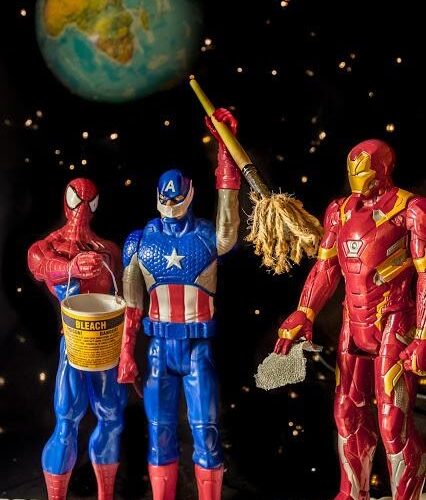
Has the last year been a delay, distraction, or an inspiration?
As the lockdowns are (hopefully) drawing to an end, it’s worth looking at examples of how some students have channelled their experiences into their student work. For many people this historic period has provided the opportunity of ready-made subjects for creativity. Not only artists, but the public in general have been getting very creative. Much of this is part of a community spirit to entertain, to lift the mood of others and to brighten up homes that seem increasingly like a scene from Groundhog Day.
Is that motivation a ‘fear of missing out’ if they don’t follow the vast numbers of people who’ve been creating as part of lockdown? More importantly for us, is it just a distraction from the work that we should be doing? It is easy to feel guilt if we let a momentous period slip by: that we ought to document it.

It is possible to make sense – and even to make fun of – the situation, with wit and a little satire. In the example above, Tor’s superheroes (borrowed from her son’s collection) clean up the earth with Trumpian bleach, using an artist’s paintbrush re-purposed into a mop. She has even made a pile of miniscule discarded face masks.
I heard a statement at a recent conference (Format21 12/03/2021) that artists should create work about the pandemic; indeed, that we have a duty to contextualise major events through our imagination, because that’s what artists have done in the past. I thought about what those motives might be, and of how they could be beneficial.
Early responses I saw included Neil Cannon’s EYV assignment 2 from April that documented the ‘new normal’ as it had been termed: home-schooling, home haircuts and neighbourhood messages.

Individual responses varied depending on circumstances, and many of us have had difficult times through illness, exacerbated issues with our mental health, losing loved ones, reduced incomes and stress. These might not be obvious starting points for artwork, but many have found that lockdown is easier to cope with if we ‘lose ourselves’ in creative acts.
One example I was directed to was Michael Millmore’s rhythmical presentation of couplets of song lyrics, intertwined with images. These are extracted from what he was listening to on his daily walks, carefully selected to stimulate reflections on the current situation.

Many have responded to their personal circumstances, to what is currently affecting them directly and to how they are mentally processing feelings about these strange times. It can be therapeutic to process our feelings via our work, to have time where we concentrate on our own little world instead of the scarier, bigger version outside. Michael states “The Loop is a durational photographic project through which I make a personal exploration of my inner being and the surroundings just beyond my front door. […] The whole process [documenting 100 days of daily walks] became a ritual – I would set my phone, put in my headphones and about an hour later when I arrived home felt my mind and perspective cleared.”
Historic England commissioned a ‘mass-observation’ collection of the public’s images (https://historicengland.org.uk/images-books/archive/collections/photographs/picturing-lockdown/) that anyone could contribute to. This is very different from earlier M O projects where ‘the many’ were observed by ‘the few’ (http://www.massobs.org.uk/). Although publicly marking a significant period, this type of ‘competitive art’ can drive participants towards clichés, towards the repeated collecting of universal symbols. Many feel that the results are not representative of the breadth of experiences we as individuals encounter: that a more nuanced and individual approach can yield results that also have a wider resonance. I suggest that the greater range within Grayson Perry’s Art Club (https://www.channel4.com/programmes/graysons-art-club) is a more representational cross-section.
Numerous examples I have come across have a wider significance, one that resonates with other people’s experiences, yet also fit into what art can be. These are an indicator of what we’re thinking and feeling and what we want to communicate: not just about the world, the here & now, but also about ourselves. To own the moment and engage with it, to capture and express it can serve to regain a little of the control that we are finding we’ve lost.

|
|






